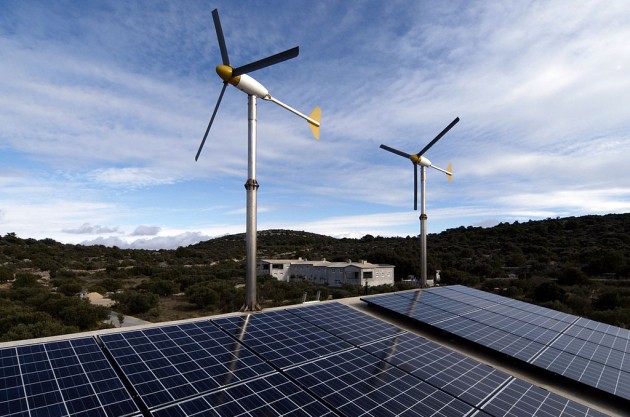
Ambitious energy plan maps the way to an entirely renewable U.S. by 2050
by Canadian Manufacturing.com Staff

Report demonstrates how each state could kick everything but wind, water and solar over the next 35 years

A hybrid energy system, utilizing numerous forms of renewable energy. PHOTO: Nenad Kajić, via Wikimedia Commons
Stanford University professor of civil and environmental engineering, Mark Jacobson, is the lead author of the report, which sees renewable energy replacing 80 to 85 per cent of today’s energy with renewables by 2030 and 100 per cent of existing energy by 2050.
“Existing energy plans in many states address the need to reduce greenhouse gas emissions and air pollution, keep energy prices low, and foster job creation,” the report claims. “However, in most if not all states these goals are limited to partial emission reductions by 2050… and no set of consistently developed roadmaps exist for every U.S. state.”
“The roadmaps here provide a consistent set of pathways to eliminate 100% of present day greenhouse gas and air pollutant emissions from energy by 2050 in all 50 sates while growing the number of jobs and stabilizing energy prices,” it adds.
The report takes into account future energy demand, the number of wind, water and sunlight generators needed to fulfill demand, cost of energy today versus in the future, footprint and spacing for generators as well as numerous other factors. The study also assumed that all energy sectors will be electrified by 2050, including transportation, which could take advantage of hydrogen fuel cells via electrolysis.
The report draws from a wide range of existing technologies to reach its goal, including, hydroelectric, tidal, wind, wave, geothermal and solar.
Improving energy efficiency is also an important part of the plan, with net power reduction making up a significant part of the shift toward renewables. By 2050, the report notes that 50 per cent of the power supply would be made up of wind, 45 per cent solar and the remaining percentage points, geothermal and hydro.
In addition to his work on the state of renewables in the U.S., Jacobson and his colleagues are now working on a roadmap to convert 139 countries to 100 per cent renewable power by 2050.